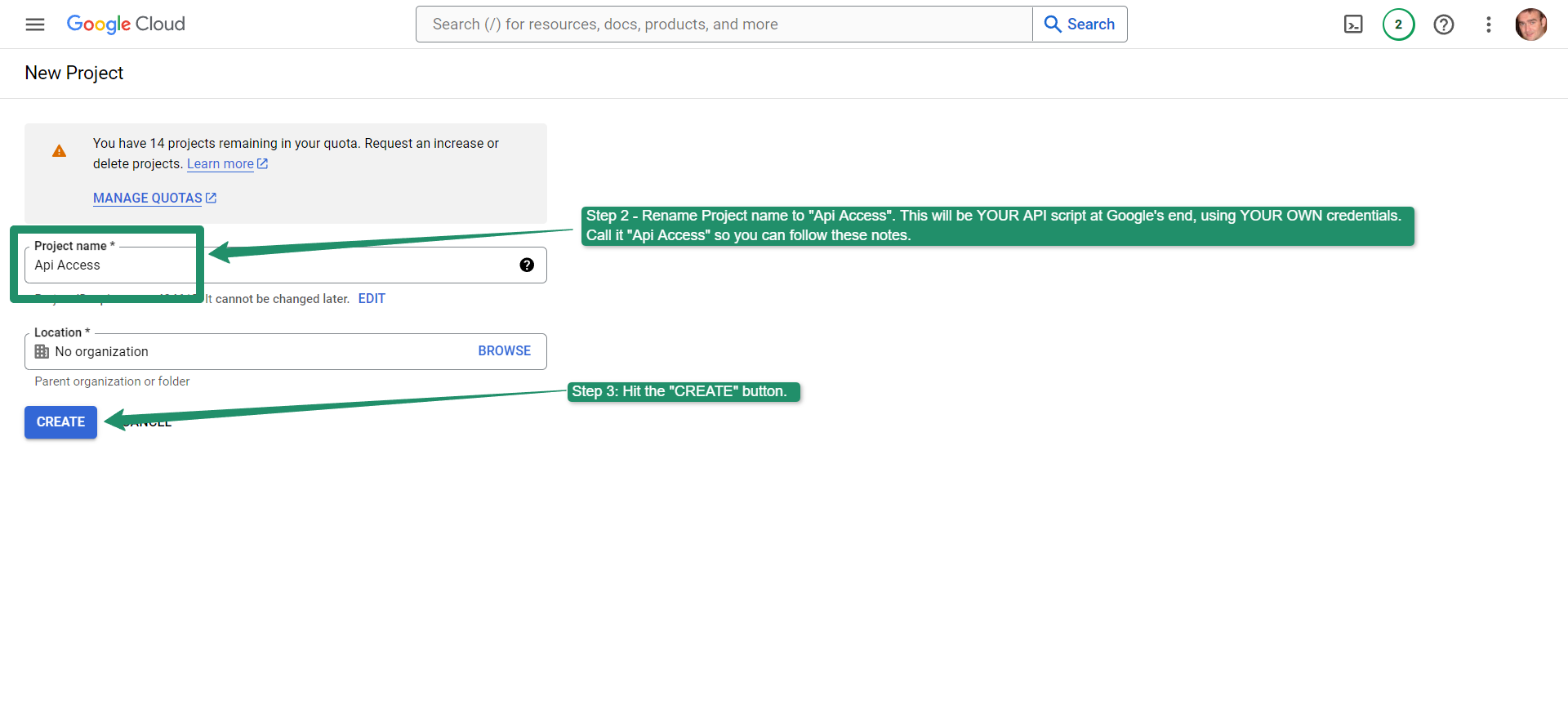
Hobo SEO Dashboard is a tool in Google Sheets that helps marketers, SEOs and website developers perform an SEO audit report of any website.
SEO Dashboard will autonomously run regular reports on every client in your Search Console to a schedule you set.
When set up, you can rely on it to automatically publish and then manage updating SEO audit reports for every client in your Search Console account.
Follow this guide to get it started.
Make a copy of your master sheet of SEO Dashboard
Set up Google APis to work with SEO Dashboard
Hobo SEO Dashboard is designed to work within Google’s free API limits, even on a personal Gmail account. It was developed on a free account and still is. It takes moments to setup.
Set up your Google Apis first, after copying the Master Sheet which was shared with you.
It only takes a few minutes for you to set up Hobo SEO Dashboard in Google Sheets and you can start navigating your Search Console clients.
Add Google Pagespeed testing and SEO tools
Select and navigate clients in SEO Dashboard
Winners and Losers reports for keywords and URLs
Publish SEO audit reports
How to set up Search Console Api
Useful link
Set up a new project in the Google Cloud console using a Personal Gmail account and free API allowance.
This is more than enough to generate these reports.
NOTE: This post presumes you have not set up any projects in Google Cloud.
How to Set Up Hobo SC (Search Console in Google Sheets) using a Personal Gmail Account
Set up a new project in Google Cloud console in a few moments.
Step 1-3
- Go to your Google Cloud Console to create a new project:
- Name the project to “Api Access”. This will be your API script at Google’s end, using your own credentials. Naming it “Api Access” will help you follow these notes. (See image below)
- Hit the “CREATE” button. (See image below)

Step 4-6
- Select “SELECT PROJECT” in the notifications. (See image below)
- Ensure the “Project name” is the same as the account you are viewing. (See image below)
- Select “APIs & Services” and in the submenu, select “Enabled APIs and services”. (See image below)
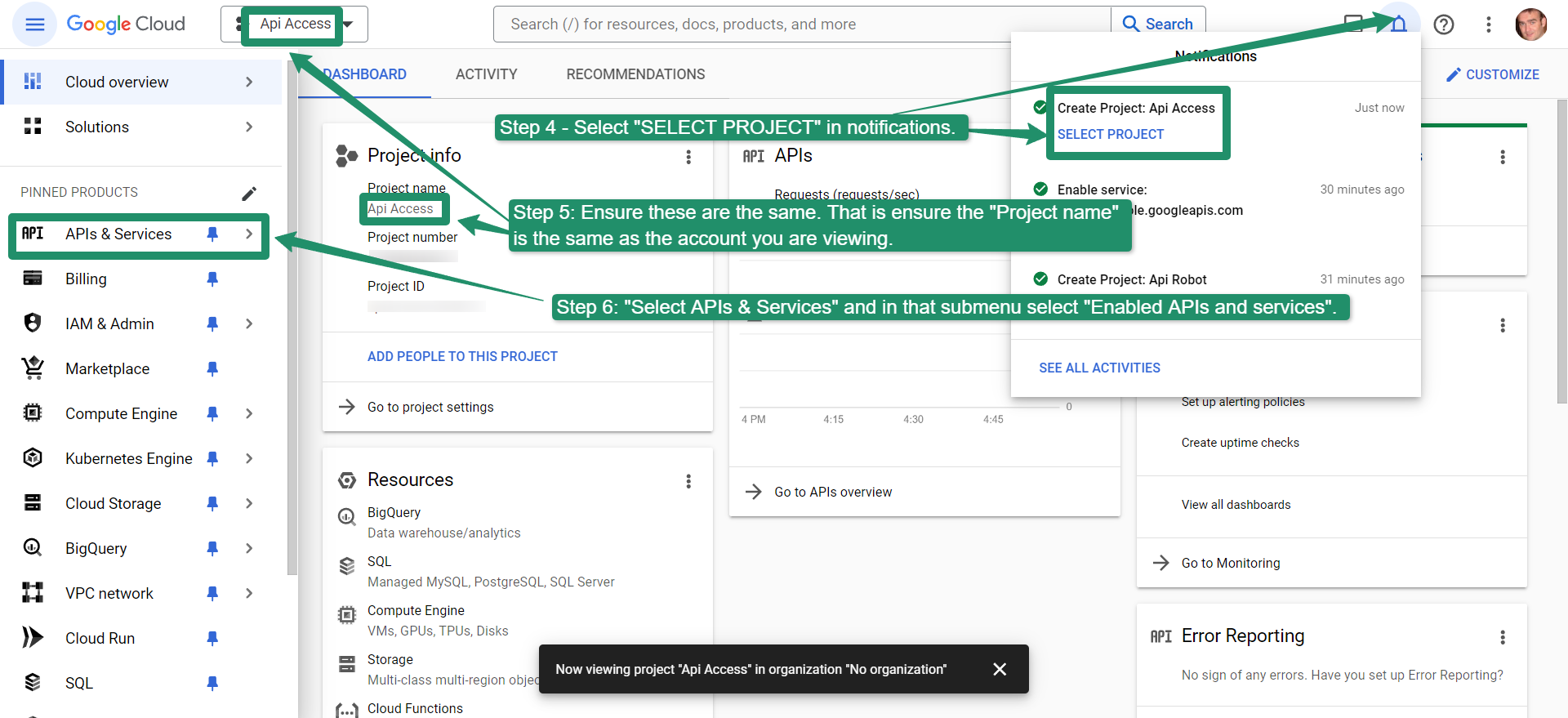
Step 7
- Select “Enable APIs and Services”.
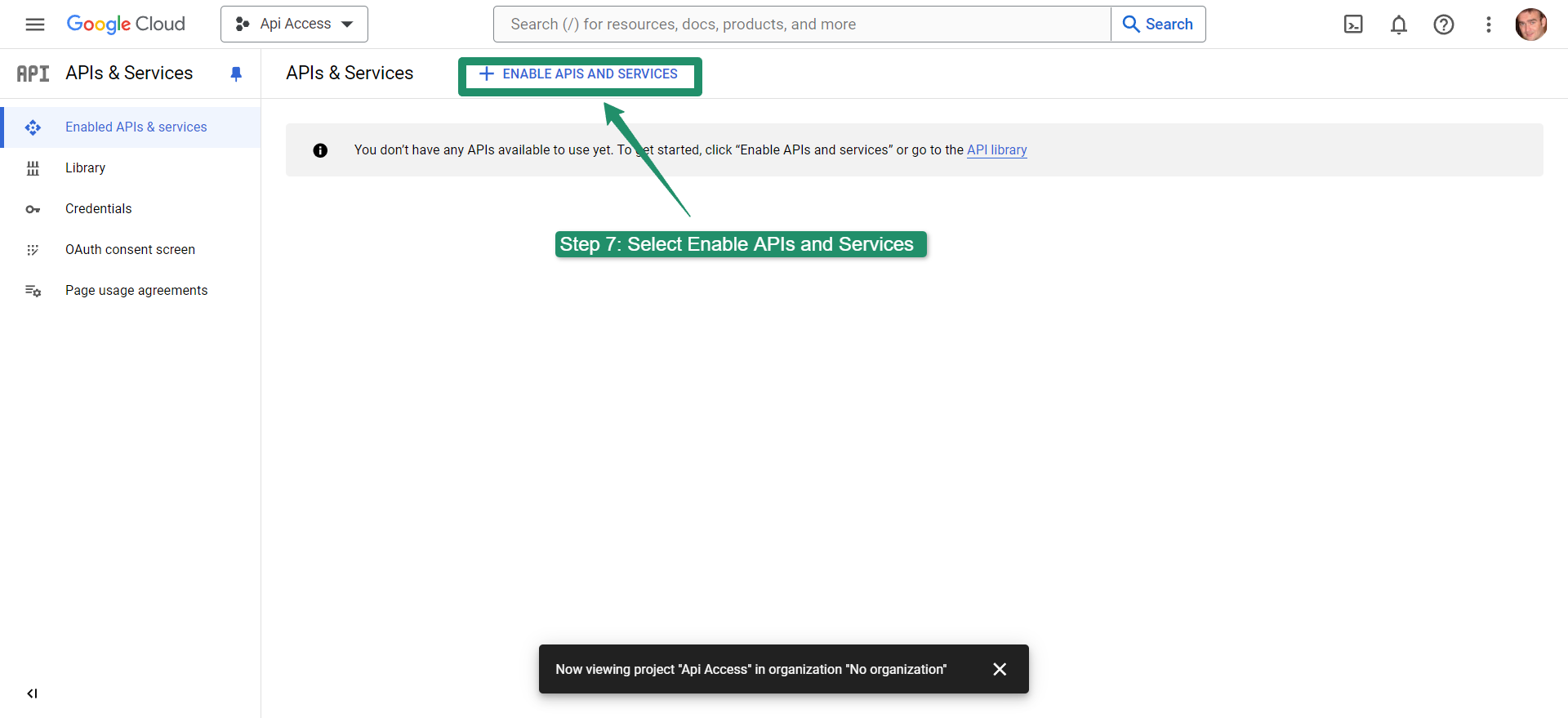
Step 8
- Type “Search Console API” into the search bar and hit enter or return on your keypad.
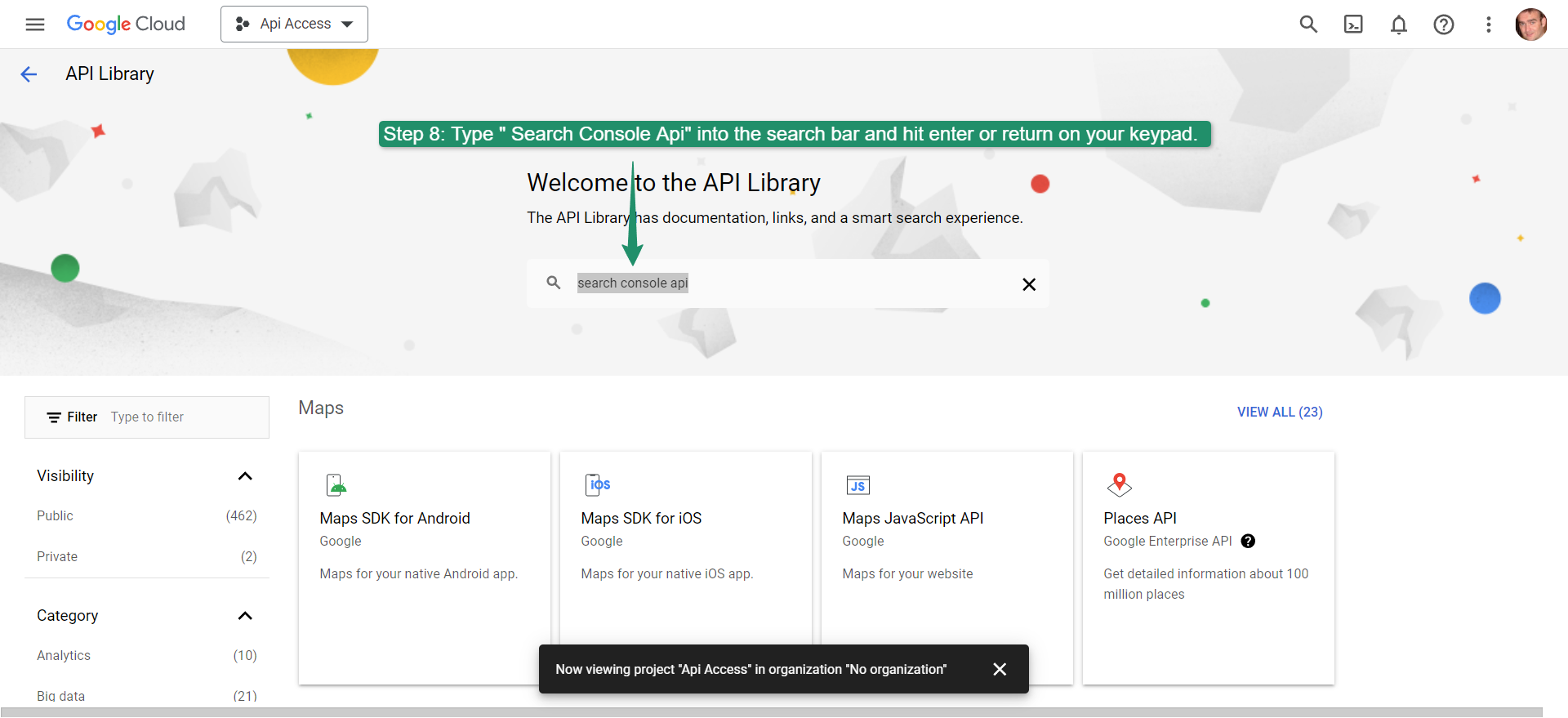
Step 9
- Select the Google Search Console API.
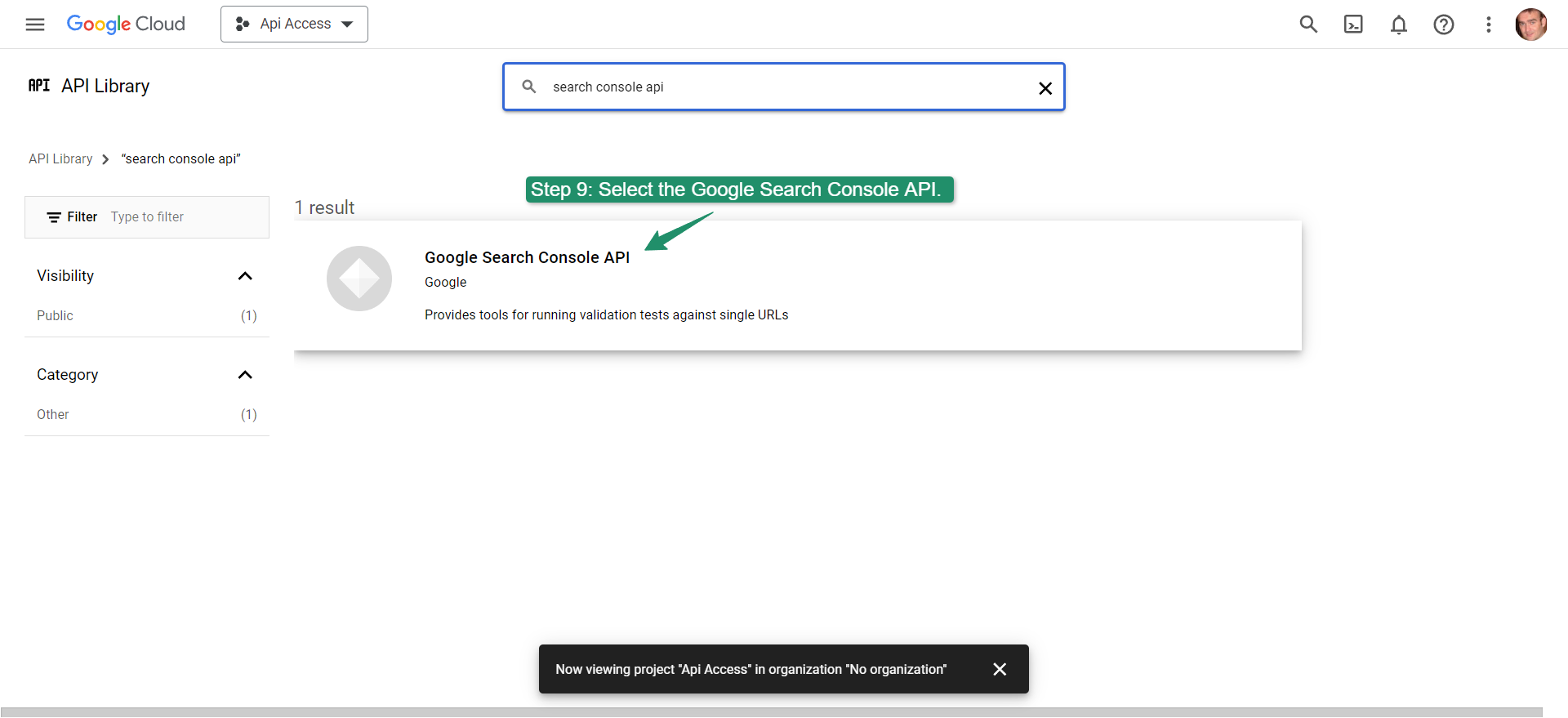
Step 10
- Select “ENABLE” to enable the Search Console API.
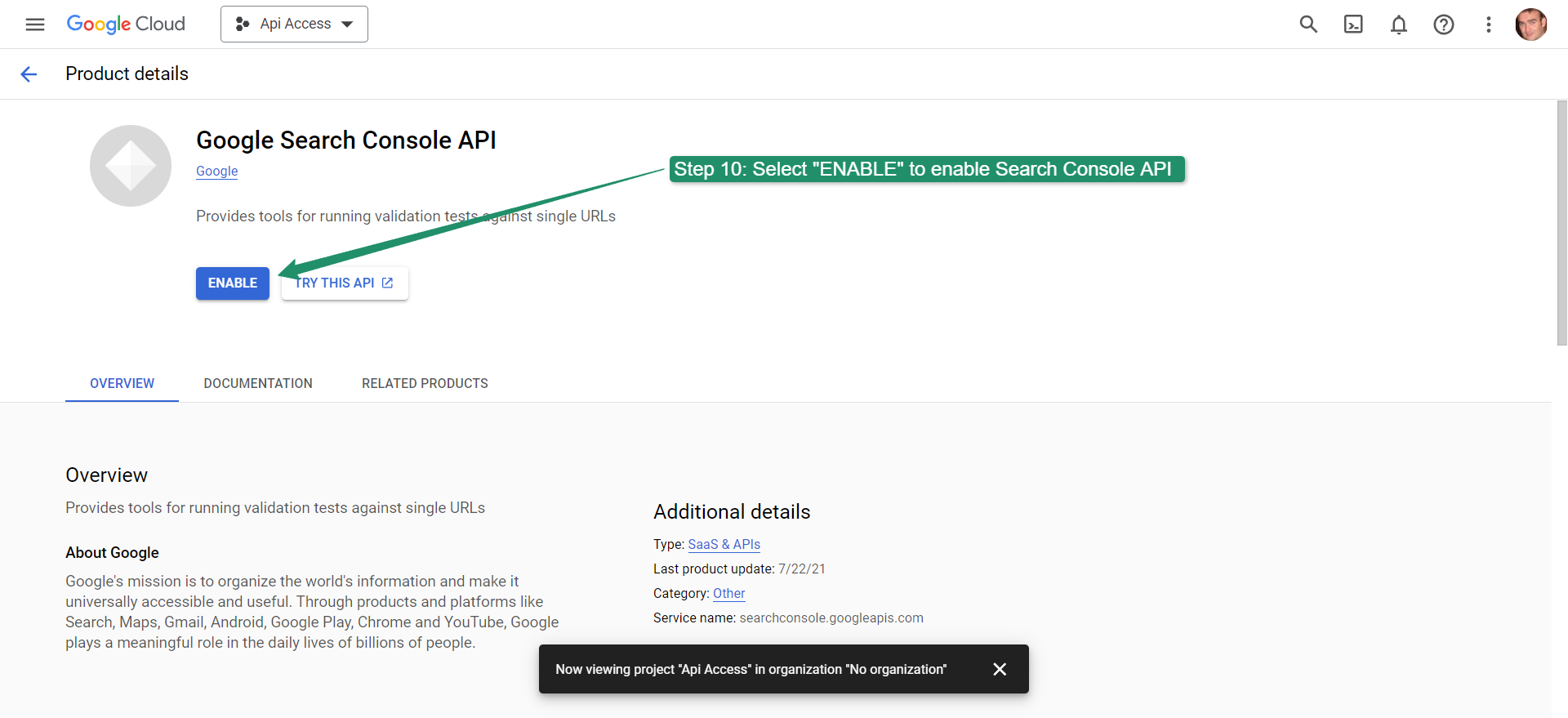
Step 11
- Select the “Google Cloud” logo.

Step 12
Copy the “Project number”
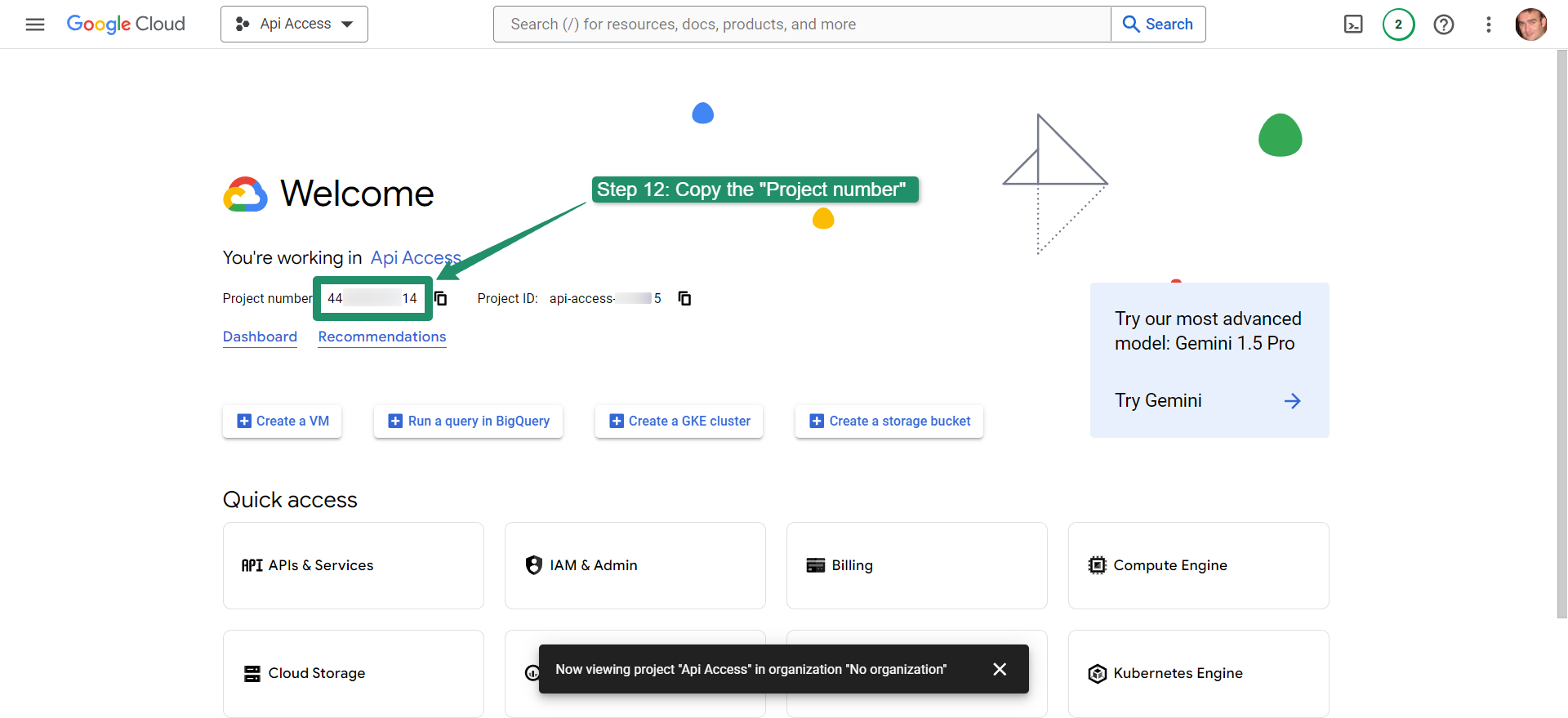
You have now created your project in Google Cloud with your own credentials and have activated the Search Console API. You also now have the “Project number” copied to the clipboard.
Step 13
- Go to the copy of the Hobo SC URL that was SHARED WITH YOU by Hobo. This is the central document I update. You have a lifetime access to this central document to make a copy of at any time.
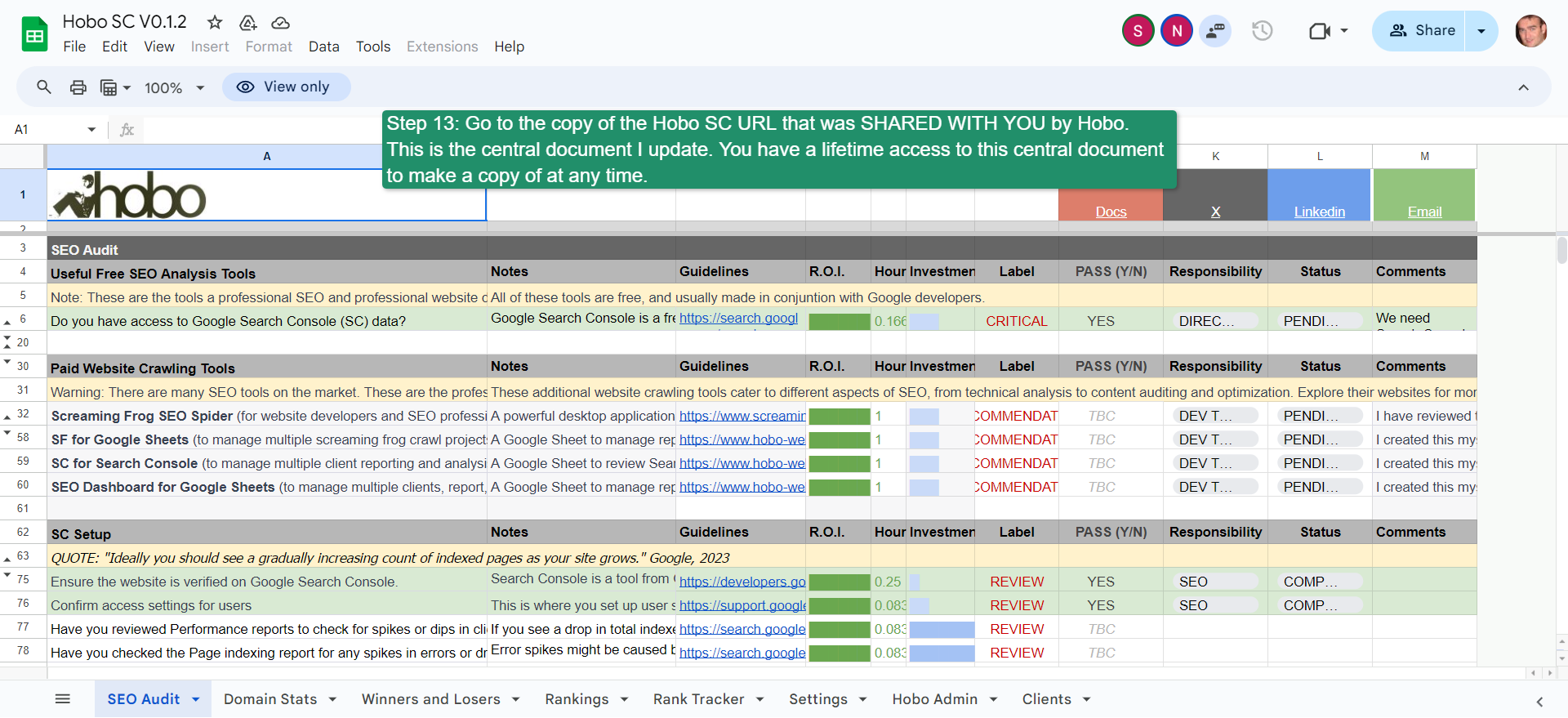
Step 14
- Select “Make a copy” from the File menu in Google Sheets.
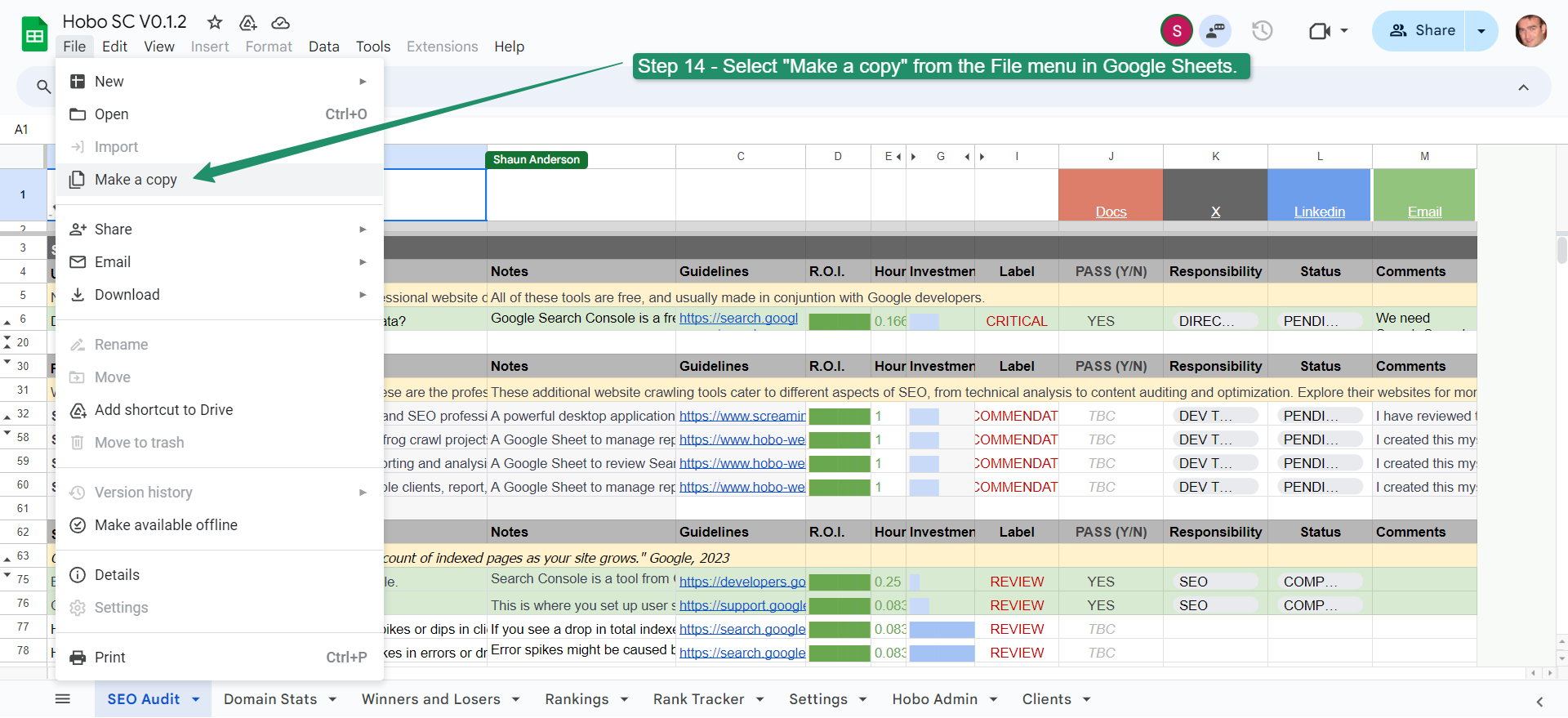
Step 15
- Select “Make A Copy”.
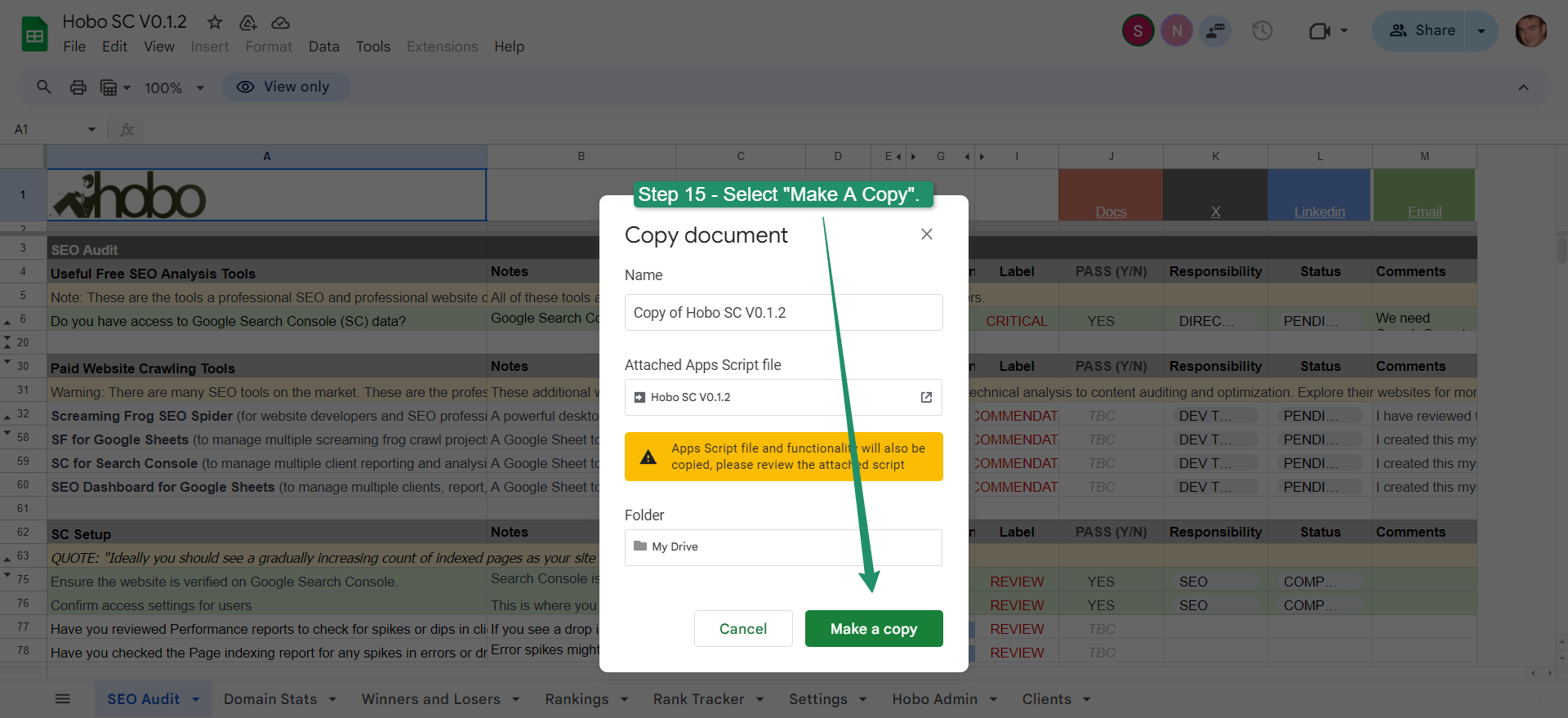
Step 16
In YOUR new copy of Hobo SC, Select “Apps Script” from the “Extensions” menu.
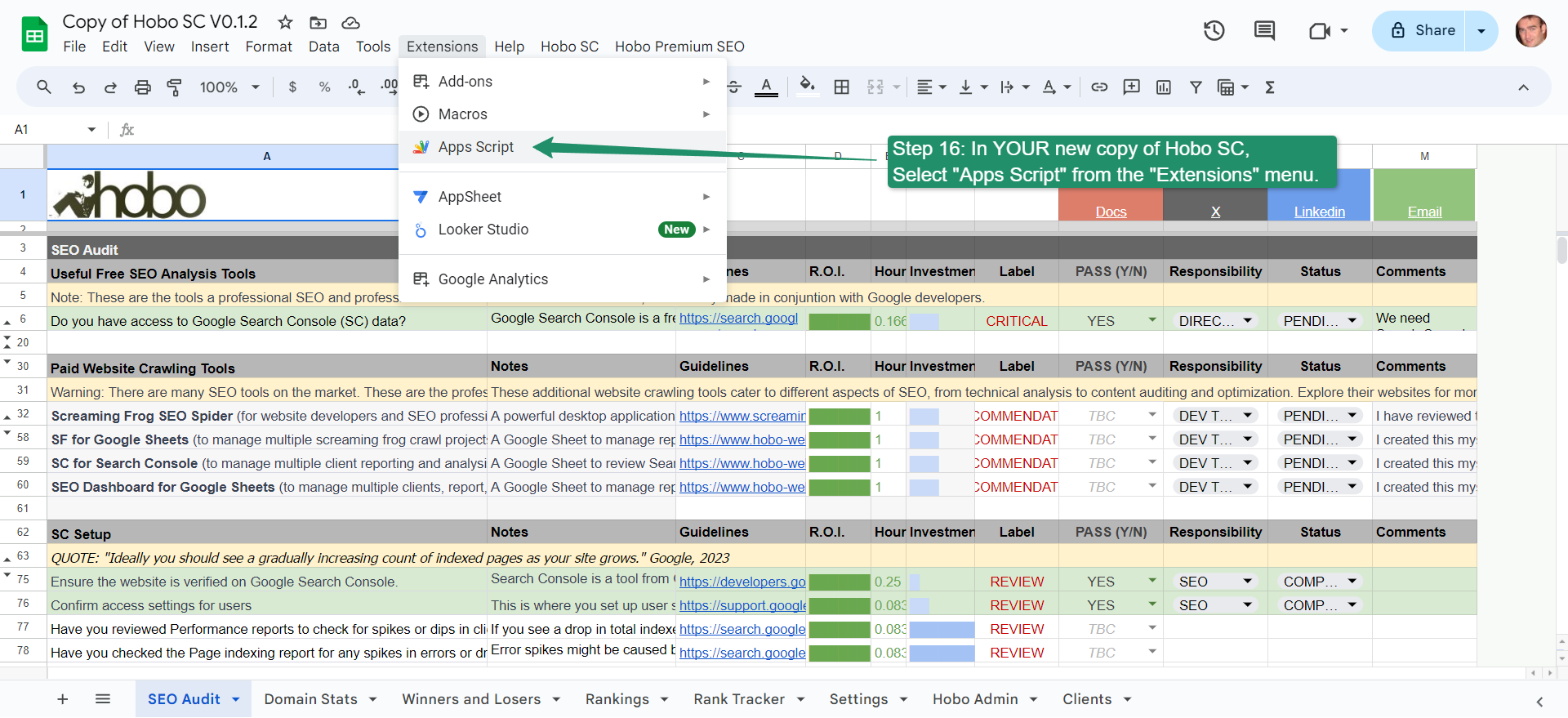
Step 17
In the Editor that comes up, Select Project Settings (the little cog-wheel icon)
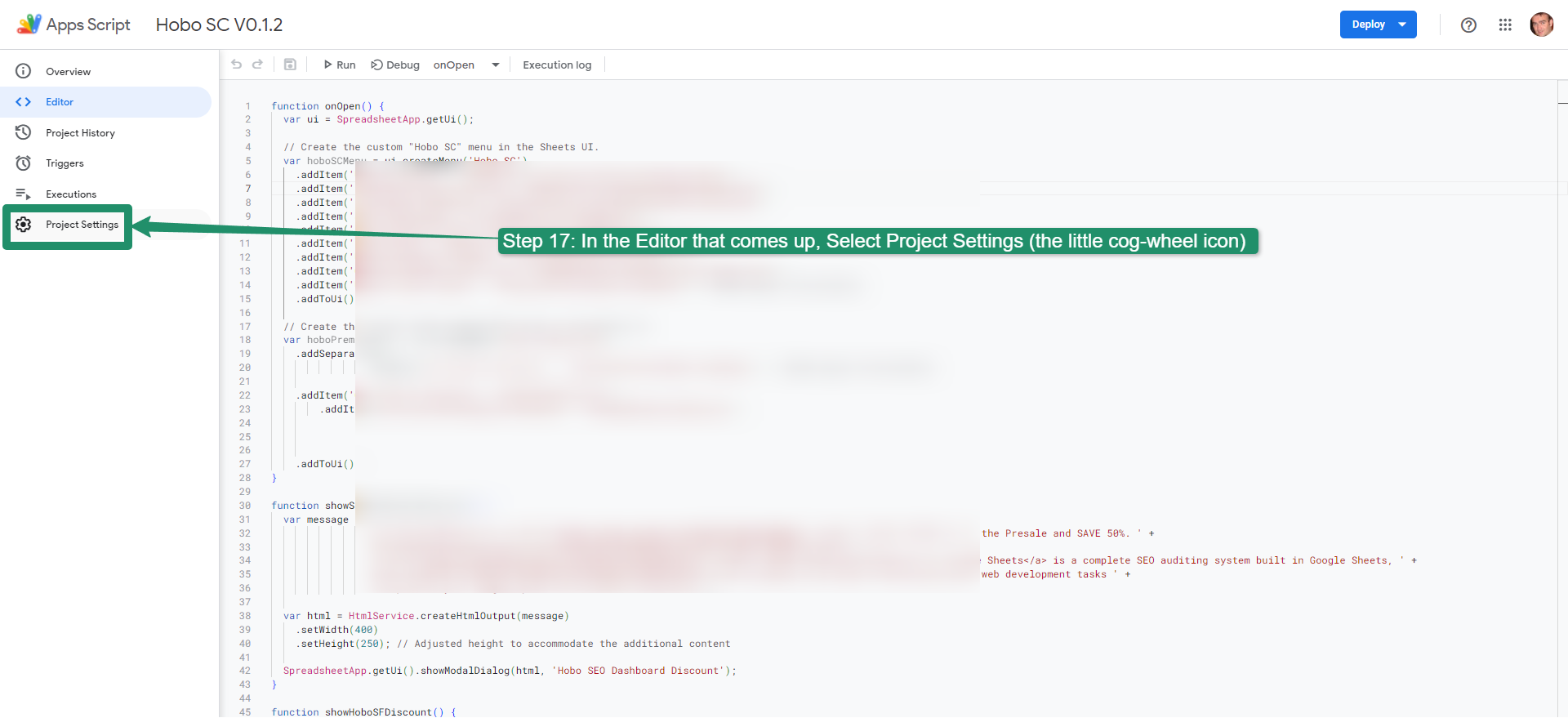
Step 18
In Project Settings, change the project number to the number you copied and pasted from Step 12 earlier in this process.
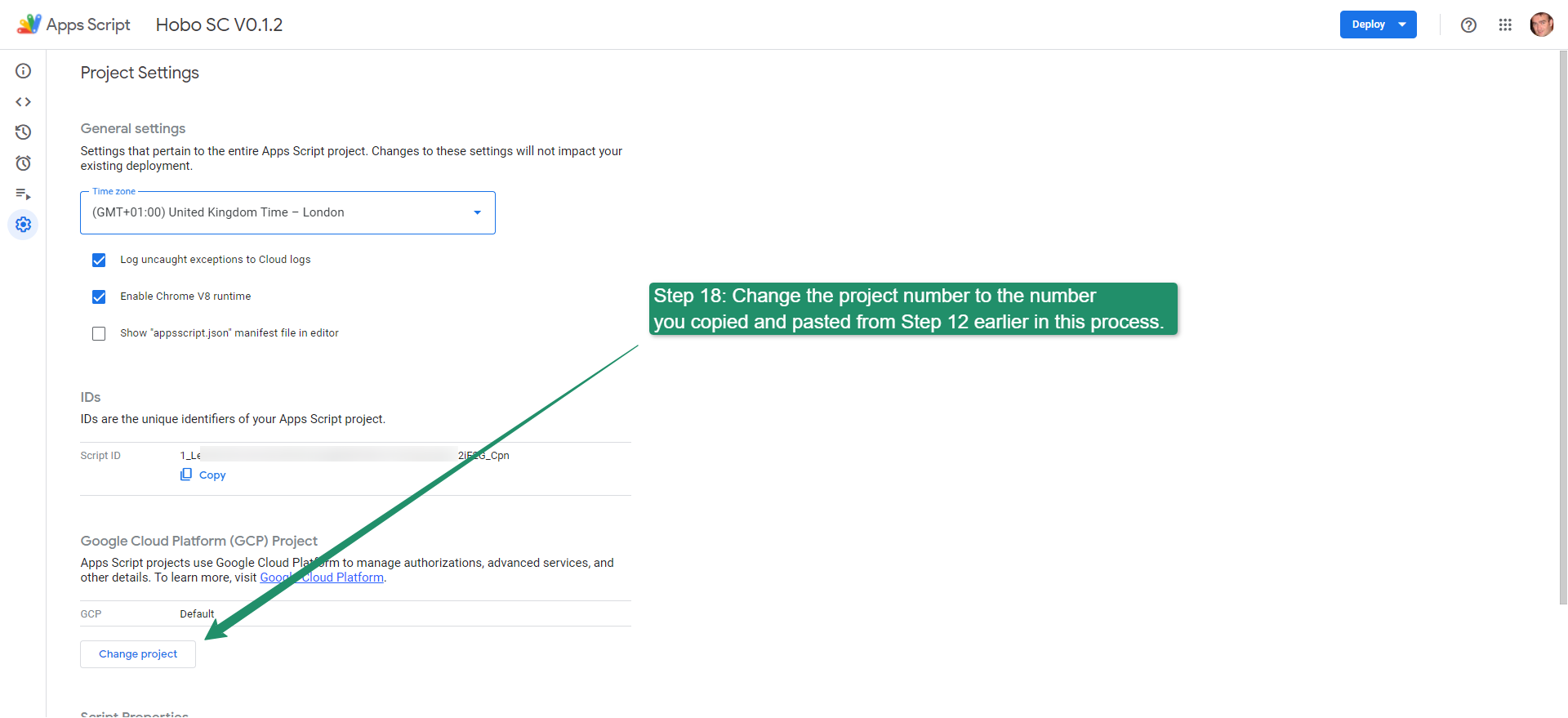
Step 19
Select the Set project button.
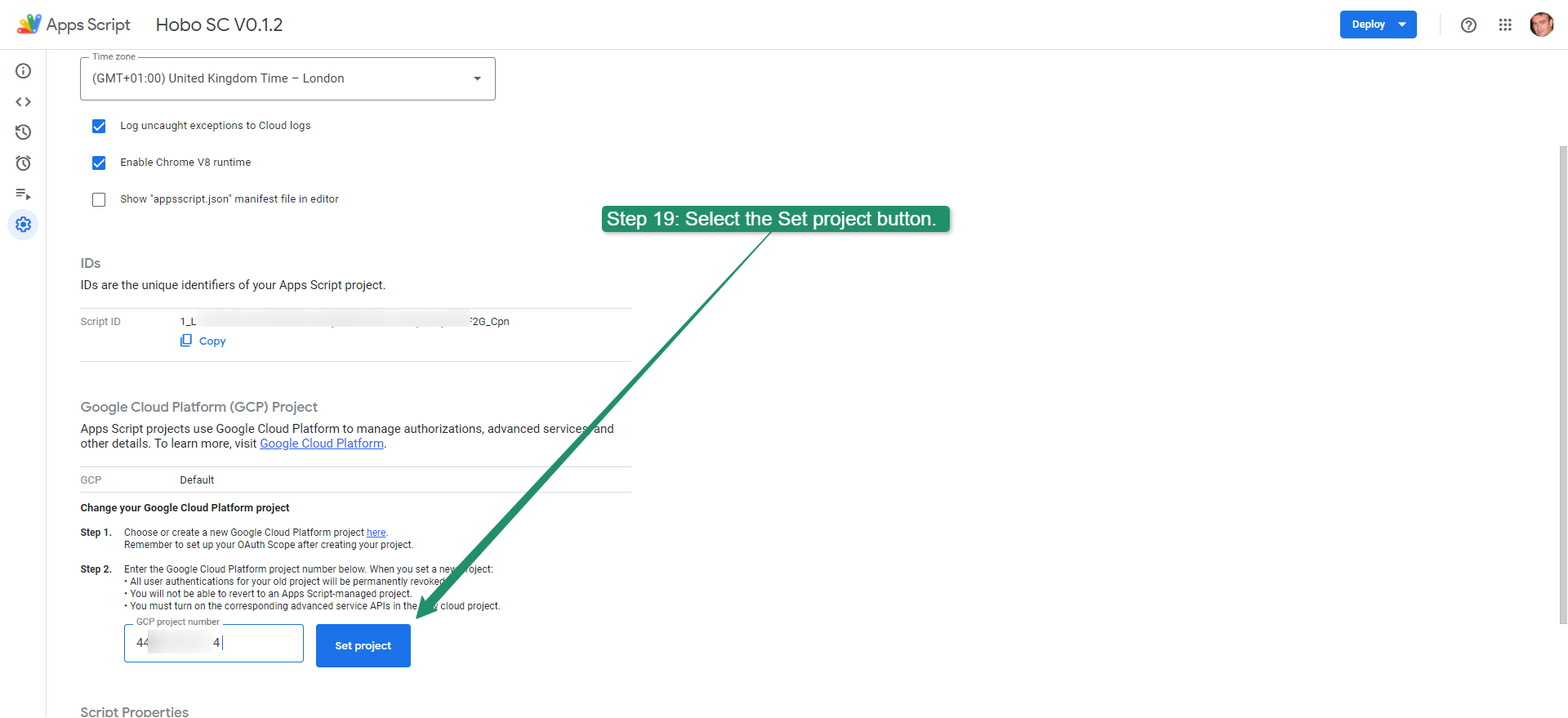
Step 20
This message will appear in RED – “In order to change your project, you will need to configure the OAuth consent screen. Configure your OAuth Consent details”. CLICK the link to Configure your “OAuth Consent details”.
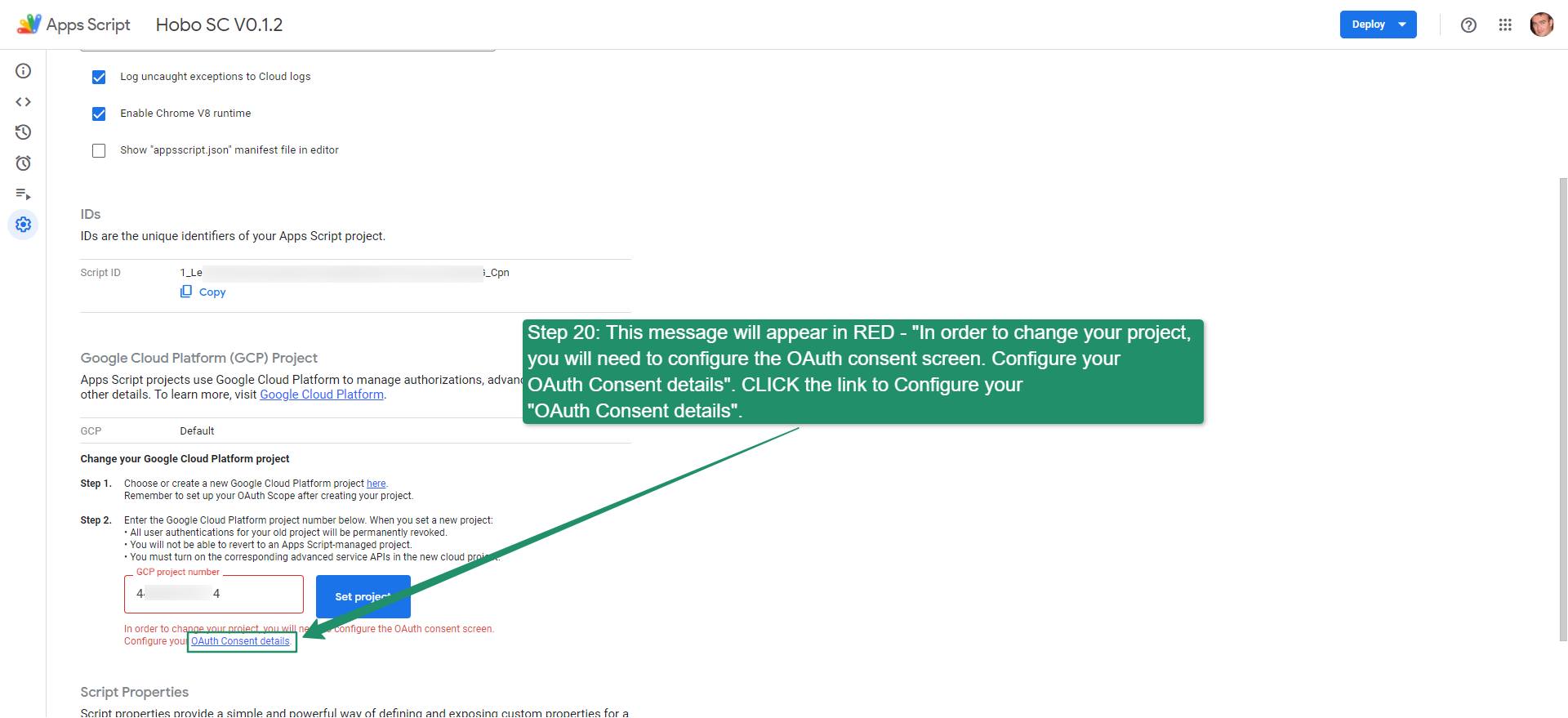
Steps 21
- Select the “CONFIGURE CONSENT SCREEN” button.
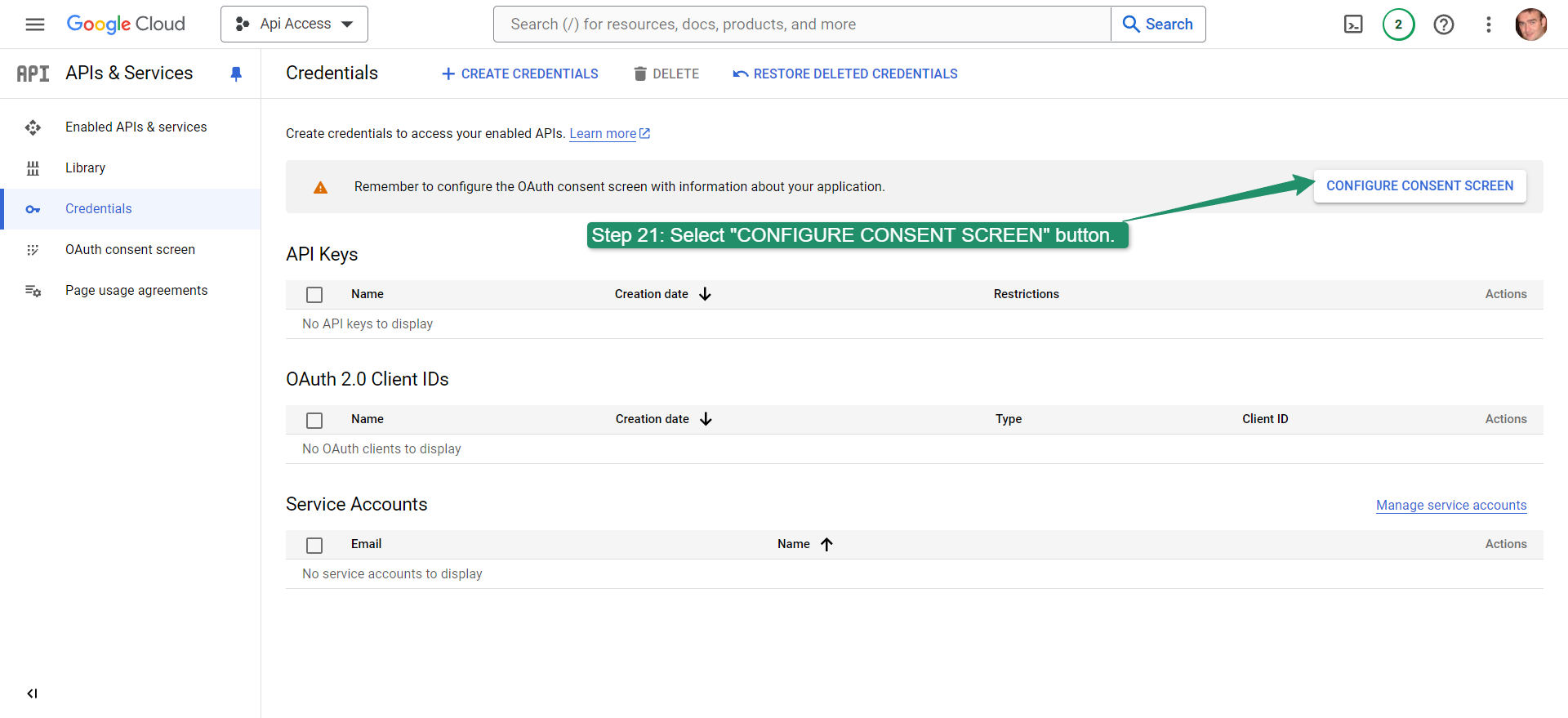
Steps 22-23
- In the OAuth consent screen, select “EXTERNAL” from the options.
- Click the CREATE button.
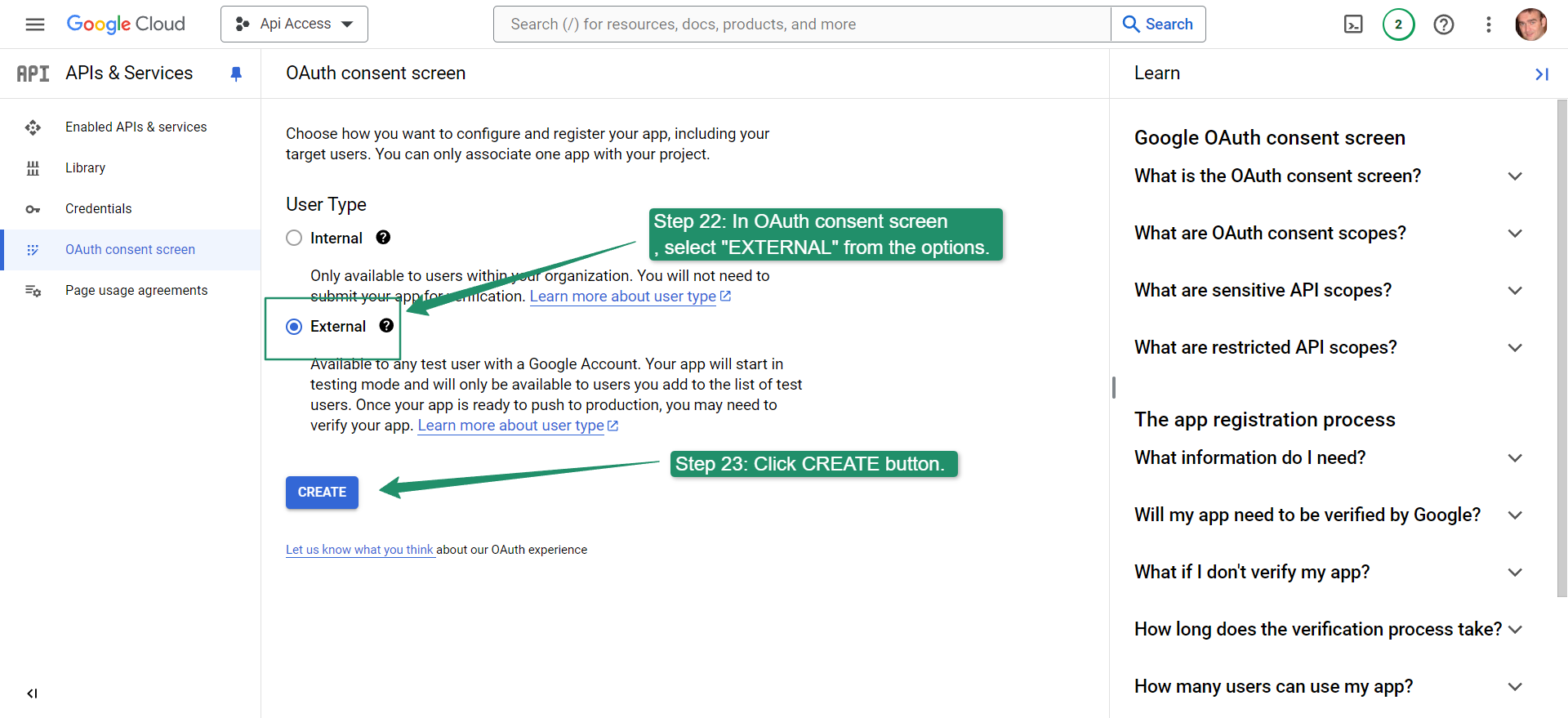
Steps 24-27
- Name the app name in “App name”. Keep things consistent with the Google Cloud project name for simplicity’s sake later on.
- Add your email to the “user support email”
- Add your email again to the developer contact info
- Click the “SAVE AND CONTINUE” button.
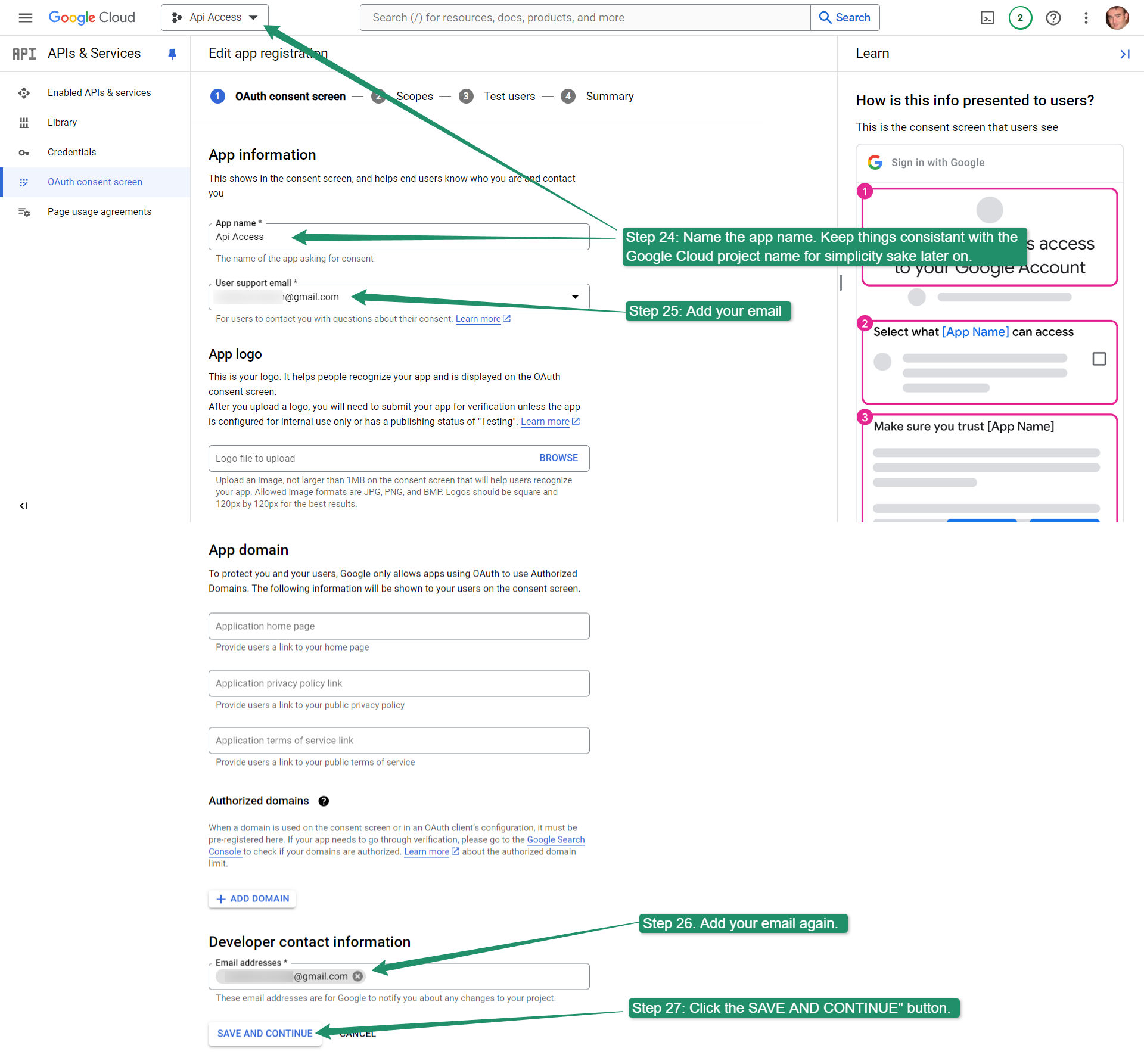
Steps 28-29
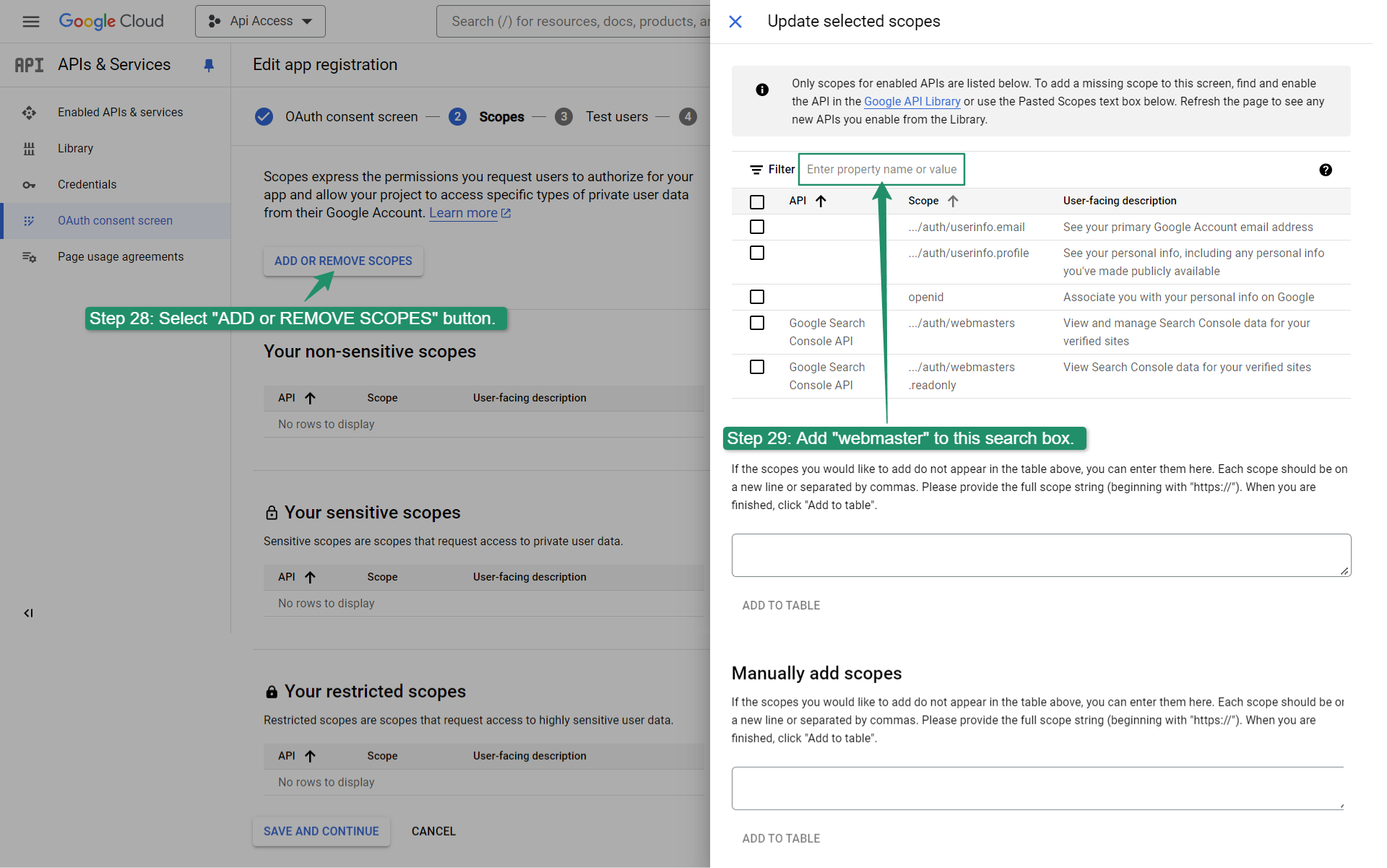
Steps 30
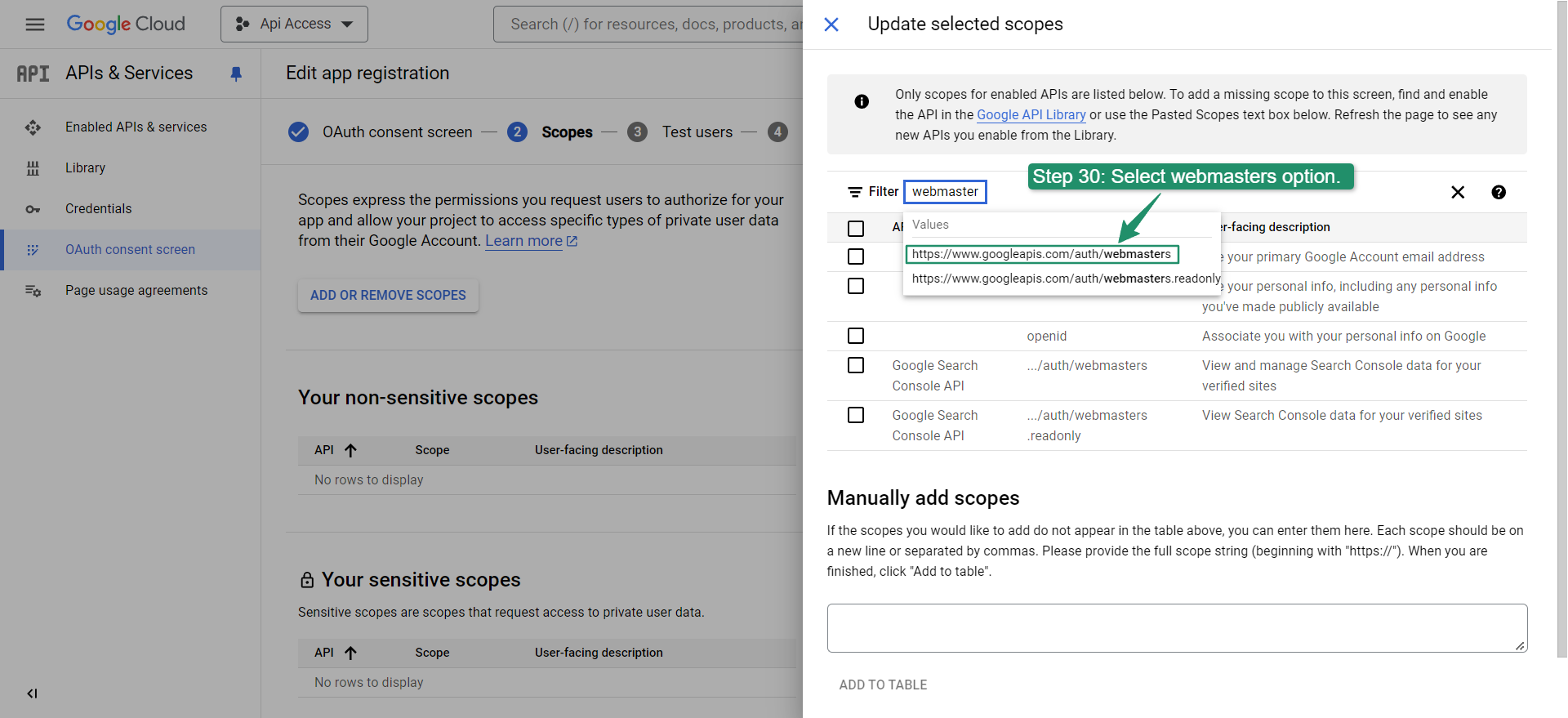
Steps 31-32
- Check the tick box for the Google Search Console API
- Click the “UPDATE” button.
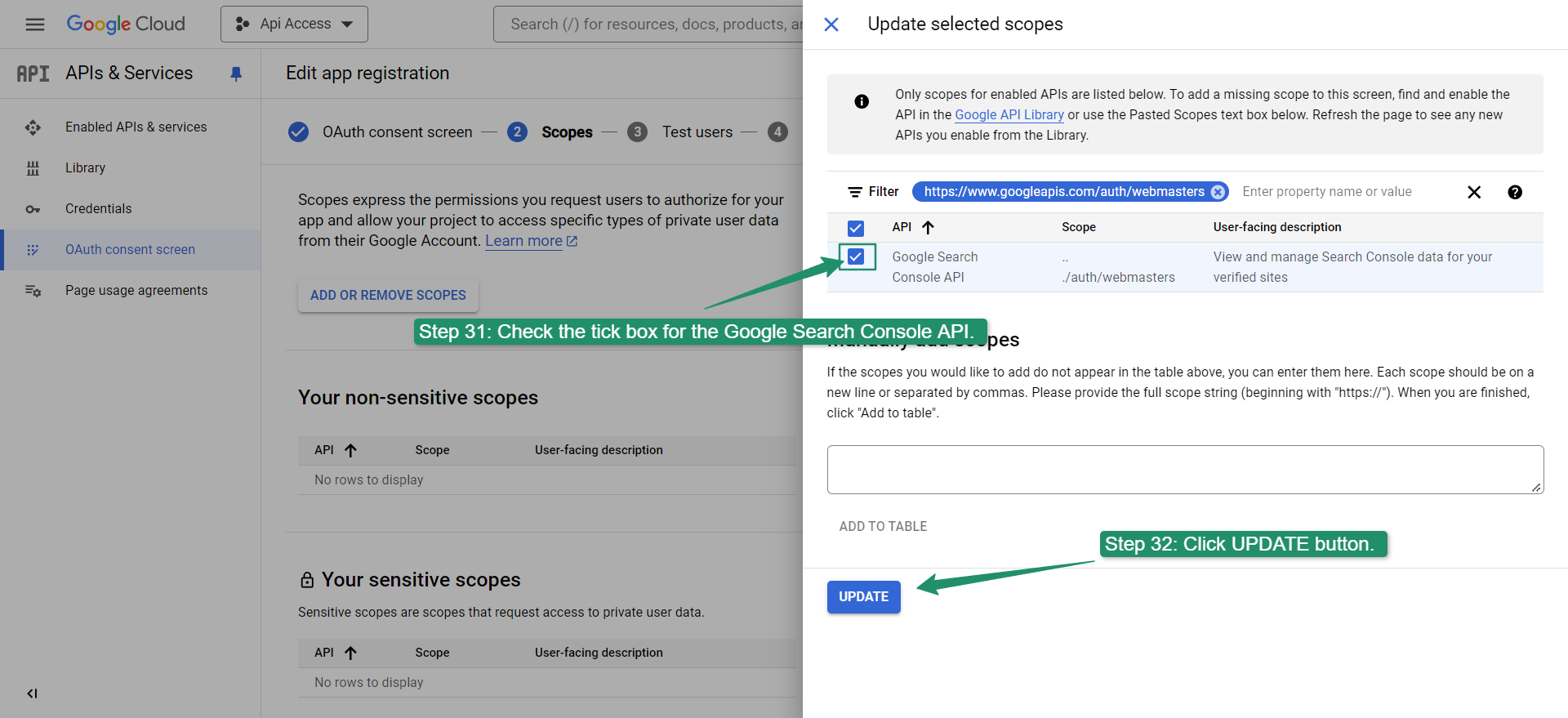
Step 33
- In Test Users, click SAVE AND CONTINUE.
Step 34
- In SUMMARY, click BACK TO DASHBOARD button
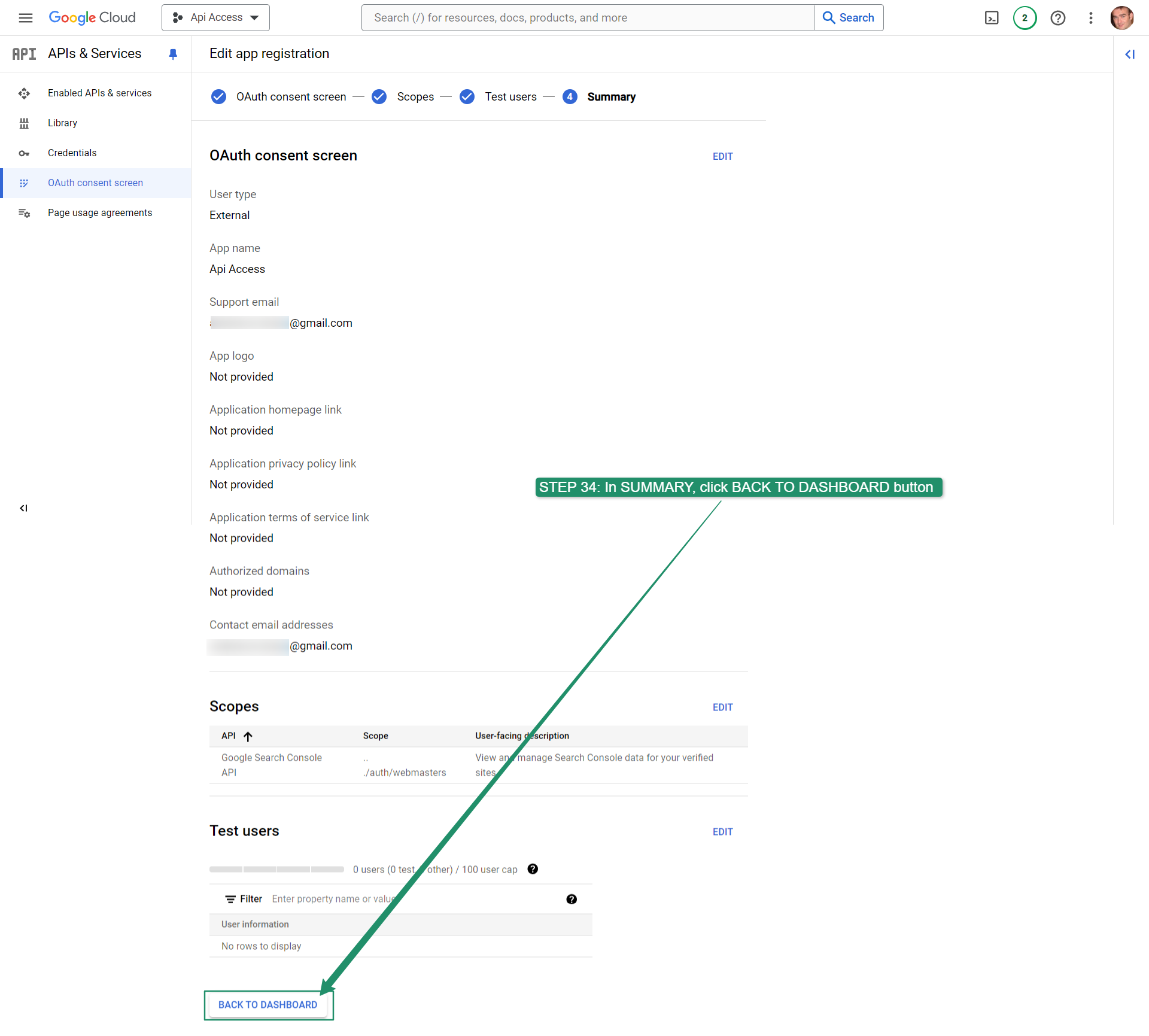
Step 35
- In OAuth consent screen, click “PUBLISH APP” button
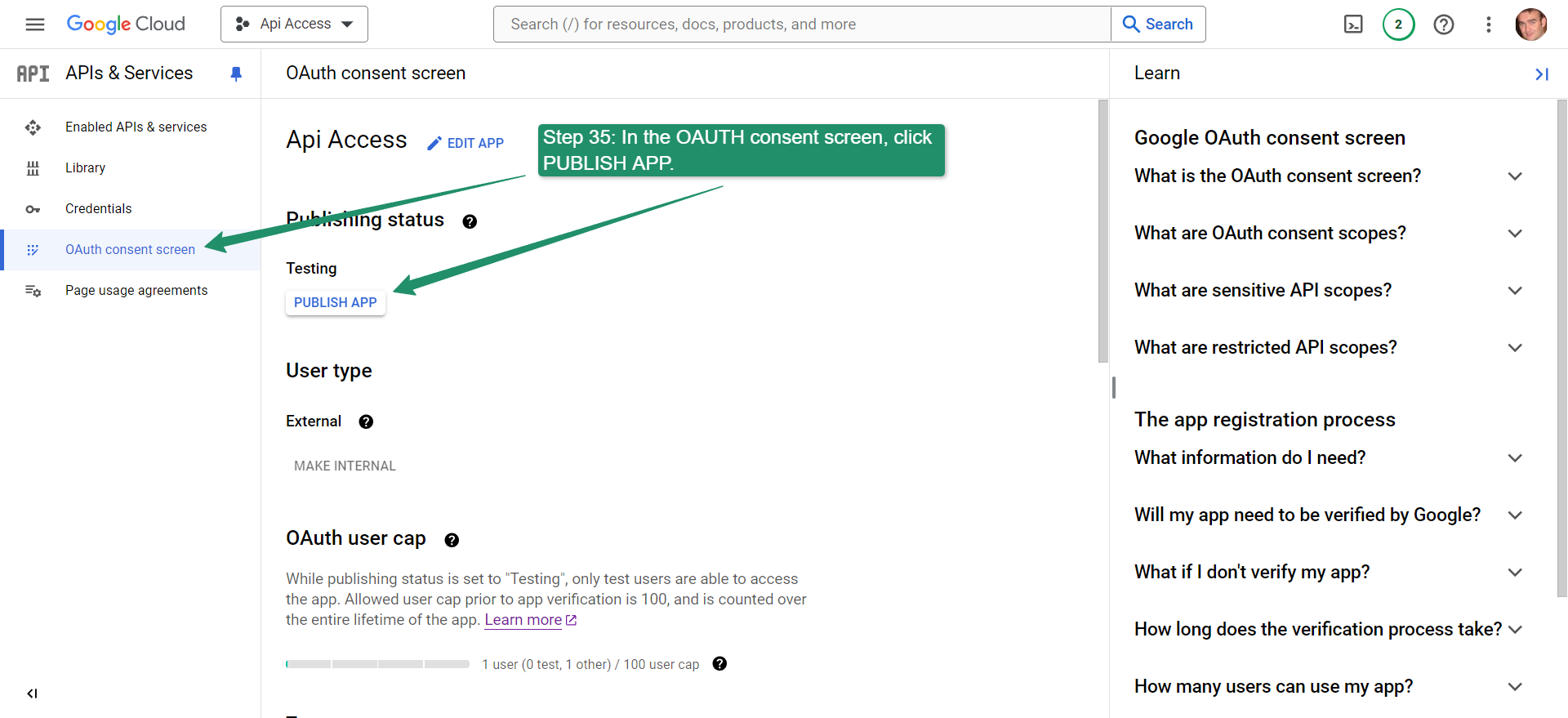
Step 36
- Go back to your APPs Script to finish to set the project that we started in Step 20. Click the “SET PROJECT” button to finish the installation. Once you set the project the scripts should be ready to run.
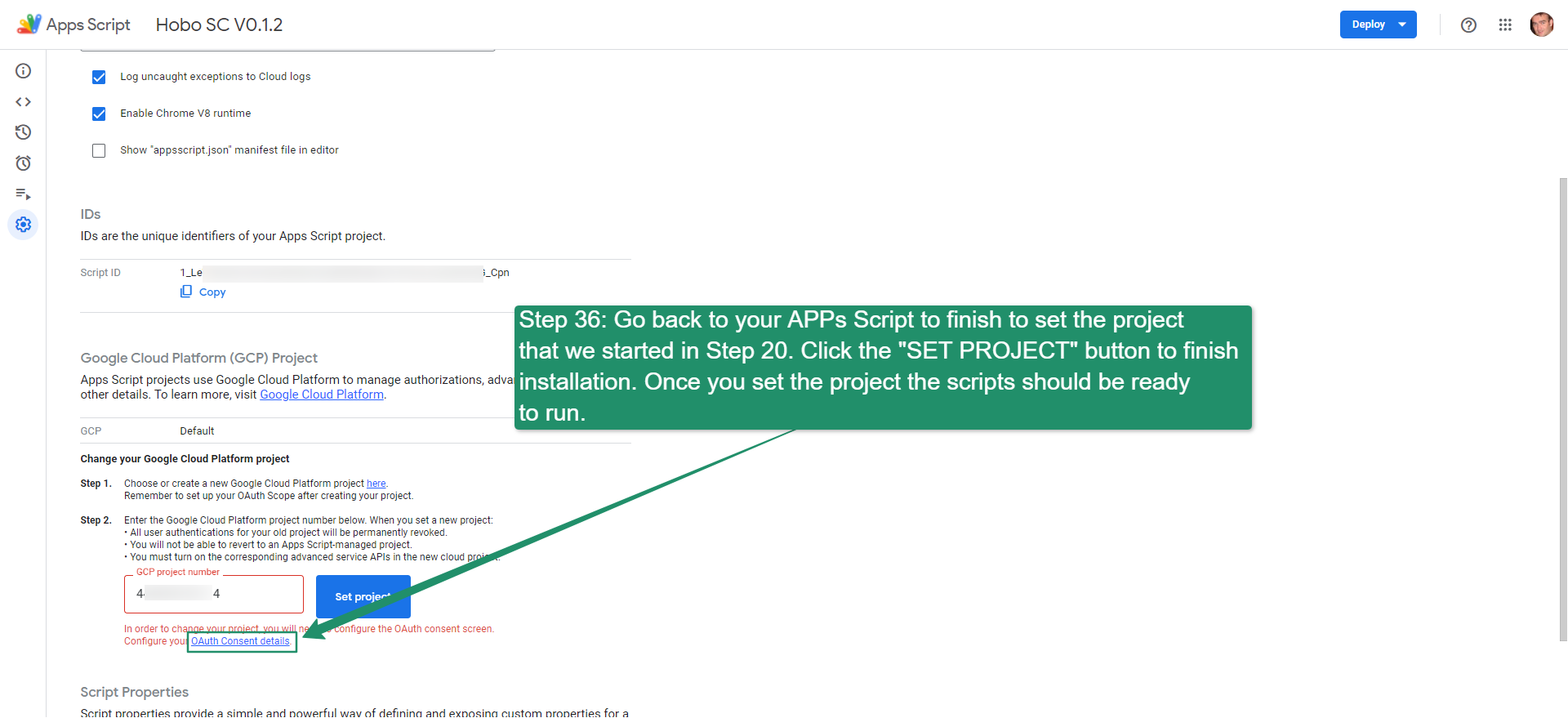
That should be you set up and good to go.
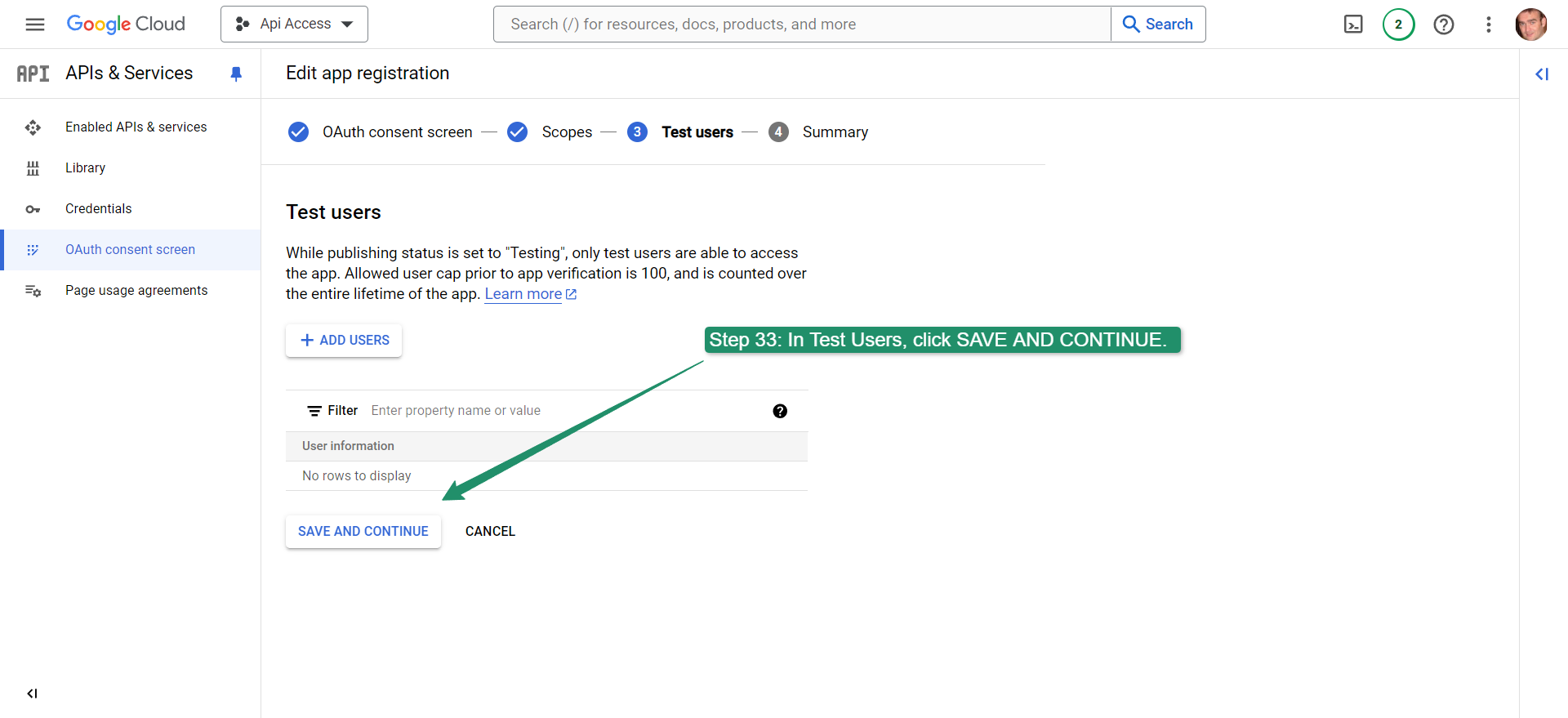

![YMYL Websites: SEO & EEAT Tips [Lumar Podcast] YMYL Websites: SEO & EEAT Tips [Lumar Podcast]](https://www.lumar.io/wp-content/uploads/2024/11/thumb-Lumar-HFD-Podcast-Episode-6-YMYL-Websites-SEO-EEAT-blue-1024x503.png)

